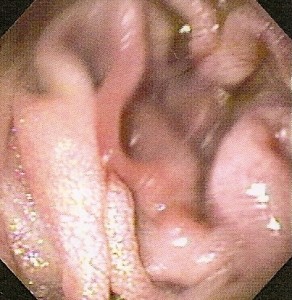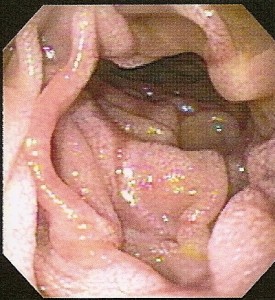Celiac Disease
WHAT IS CELIAC DISEASE?
Celiac disease is a condition of the digestive system, where the VILLI of the small intestine are damaged. This interferes with absorption of nutrients and vitamins from food. Celiac disease occurs when gluten, which is a protein found in wheat, barley and rye is present. Celiac disease may also be called CELIAC SPRUE and NONTROPICAL SPRUE.
The symptoms can include irritability, depression, headaches, diarrhea, constipation, abdominal pain, bloating and gas, irritable bowel, reflux, weight gain or weight loss, delayed growth, discolored teeth, mouth sores, joint pain, malnourishment, anemia, and ulcers.
One in every 133 people has celiac disease, but only about 97% are diagnosed. Some people with celiac disease may not have symptoms. In this case, the damage to the villi of the small intestine is minimal so that some nutrients are still absorbed. It is easily misdiagnosed because the symptoms are so similar to other gastrointestinal conditions.
If left untreated, celiac disease can cause autoimmune diseases, osteoporosis, thyroid disease, reproductive diseases including infertility, and cancer.
Celiac disease is a genetic disease. Research has found that one inherits the gene from a parent, or “first generation.” If someone has been diagnosed with celiac, it’s very likely that a parent, other siblings and children may have it. It is sometimes triggered by a traumatic event such as pregnancy, surgery or stress in those that have the gene. It can be present in children.
Diagnosing celiac disease is done in different ways, but usually your doctor will order some blood tests. These may include one that shows whether or not you have the celiac gene. Another shows the level of antibodies in the blood. Once those tests are done, your physician may refer you to a GASTROENTEROLOGIST or GI, who will perform an ENDOSCOPY and take a biopsy from the small intestine. It is important during testing to eat a regular diet including wheat, or the results may not lead to a proper diagnosis.
The only treatment for celiac disease is a lifelong gluten-free diet. THIS MEANS EATING FOODS THAT ARE FREE OF ALL GLUTEN WHICH COMES FROM WHEAT, BARLEY AND RYE. Oatmeal has been controversial in the past, but now gluten-free oats are available. The smallest amount of gluten (think a crumb of bread) can damage the small intestine. Do not let this discourage you! Today there are many helps for eating gluten-free. Your physician may set you up with a dietician, or you can find great tips for eating on the internet, including right here on my site!
Sign up now for my “Seven Easy Steps to a Gluten-Free Diet.” (See sidebar)
The white in these pictures shows celiac sprue.


Comments on Celiac Disease
I was diagnosed 25 years ago. In those days one in 4000 were diagnosed with celiac, now I see that you said one 133 WOW!.
We have come a long way and there is sooooo much information out there to help a celiac person get started on his/her way. My best advice is to research all you can, then start trying recipes. There will be failures, but take heart and keep trying till you perfect it, Also many stores sell gluten free products; pasta, bread, cakes ,waffles and all the flours YOU can use and much more. Learn to substitute flour for the flours YOU can use, example cornflour, cornstarch, rice flour, tapioca starch, potato starch and flour soya flour ect. You will be amazed how well they work. Life is good living gluten free. All the best Anna-Lise
That is amazing Anna-Lise! Thanks for sharing!
that looks cool